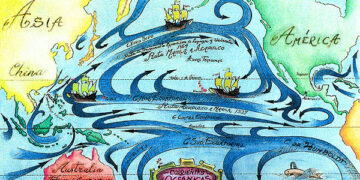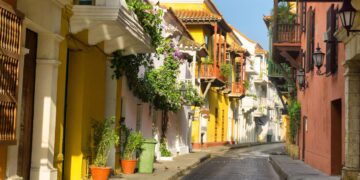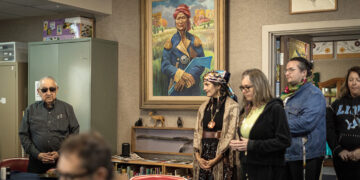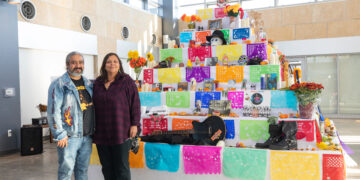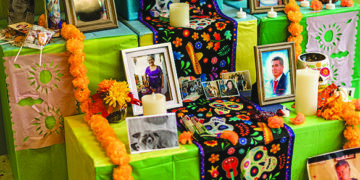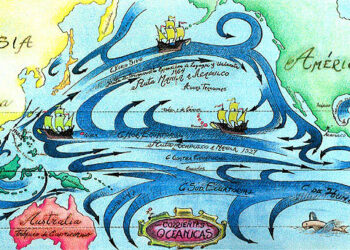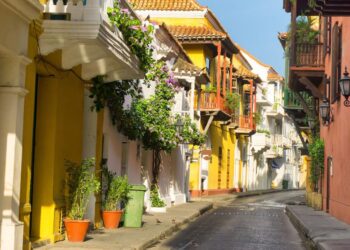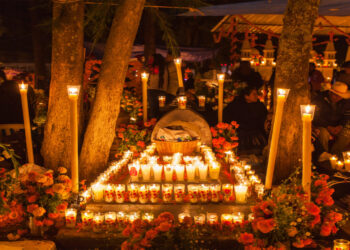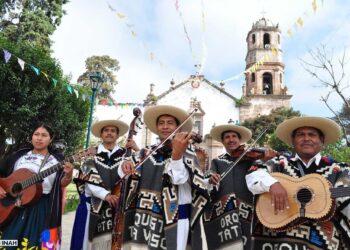The Chuj or Chuh people, whose homeland is in the border between Guatemala and Mexico. Their population estimates vary between 30,000 and over 60,000. Their indigenous language is also called Chuj.
The Chuj, and their ancestors, are believed to have lived in the same area for 4,000 years. They first came into contact with Spaniards conquerors in the 1530s; however, they were not finally subdued by the Spanish colonial authorities until the 1680s. In the post-Colonial era, the Chuj lost much of their communal land, reducing them to extreme poverty. This resulted in a history of violent resistance to authority culminating in guerrilla.
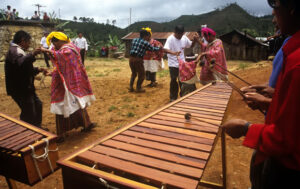
The name Chuj is an exonym first used by the Spaniards. According to folk tradition, the term was coined by the Tzeltal conscripts of the Spanish, for whom it meant the loose wool overgarment traditionally worn by Chuj men. The Chuj themselves use an autonym based on their town of origin, ajSan Matéyo (from San Mateo Ixtatán), ajSan Sabastyán (from San Sebastián Coatán), or ajNenton (from Nentón).
The Chuj have a reputation for rebelliousness and antagonism to authority, the historic causes of which arise out of poverty and grievances over land distribution.
As far as the Chuj’s political history is concerned, it is known that they were subject to K’iche’ domination in the 15th century but freed themselves from K’iche’ control in the early 16th century.
The Chuj traditionally have arranged marriages, although Church weddings are relatively rare because of the cost of having a priest officiate. Chuj men also practise “Robbing the bride” where a woman is taked away rather than the grooms family formally petitioned for her hand.
Traditional Chuj beliefs remain strong, where most of those are based on natural features and the spirits these hold —hills, rock outcrops, streams, and caves—have spirits. The spirits in caves, who are often ancestors of the townspeople, may be approached for aid and advice. Death is the transition to “ancestorhood.” Deathbed instructions are binding obligations, and spirits enforce them with sanctions of illness and misfortune. These spirits can be approached for advice and aid at family altars, cave entrances, hilltops.
Catholicism is prevalent as well: in San Mateo it is syncretic, combining with traditional beliefs, while in San Sebastián there is a sharp divide between those that hold traditional beliefs and those that follow the activist Catholicism of the Catholic Action group in the town.
The origin of the San Mateo´s salt mines
They say that a long time ago three siblings lived in the community. A man and two women, Atz’am (Salt) and K’a ’(Bitter).
While he was in charge of bringing firewood home; the sisters took turns cooking. But Atz’am’s food always tasted better.
One day her sister spied on her and discovered Atz’am adding some of her snot to her food. K’a ’ran to tell her brother.
Atz’am had discovered that her snot tasted like salt and that is what made the food more delicious, but the angry brother exploded in anger
Atz’am came out crying and then decided to go away.
It was never known where she stayed to live, but they say that the tears and blood that she shed gave rise to the largest salt mines in San Mateo, which we Chuj continue to care for and remember.
Pueblo Chuj – México y Guatemala
El pueblo Chuj o Chuh, con una población de aproximadamente 45,000 miembros distribuidos en el territorio entre Guatemala y México son hablantes de la lengua con el mismo nombre, la lengua Chuj, una de las lenguas mayas.
Se cree que los Chuj y sus antepasados mayas han vivido en la misma zona durante cerca de 4,000 años. Entraron en contacto por primera vez con los conquistadores españoles en 1530; sin embargo, fueron sometidos por los conquistadores coloniales españoles hasta 1680.
Los Chuj tienen fama de rebeldes y antagonistas a la autoridad europea y mestiza, cuyas causas históricas surgen de la pobreza y los agravios por la colonización-invasión-distribución de la tierra. En la era poscolonial, los Chuj perdieron gran parte de sus tierras comunales, lo que los redujo a la pobreza extrema. Esto resultó en una historia de resistencia violenta, que culminó en la guerrilla.

El nombre Chuj es un exónimo utilizado por primera vez por los españoles. Según la tradición popular, el término fue acuñado por los conscriptos tzeltales de los españoles, para quienes significaba la ropa de abrigo de lana suelta que tradicionalmente usaban los hombres chuj. Los propios Chuj utilizan un autónimo en función de su pueblo de origen, ajSan Matéyo (de San Mateo Ixtatán), ajSan Sabastyán (de San Sebastián Coatán) o ajNenton (de Nentón).
En lo que respecta a la historia política de los Chuj, se sabe que estuvieron sujetos a la dominación k’iche ‘en el siglo XV, pero se liberaron del control k’iche’ a principios del siglo XVI.
Los Chuj tradicionalmente han arreglado matrimonios, aunque las bodas en la Iglesia son relativamente raras debido al costo de tener un sacerdote que las oficie. Los hombres chuj también practican “Robar a la novia”, donde se lleva a una mujer en lugar de que la familia del novio solicite formalmente su mano.
Las creencias tradicionales del pueblo Chuj siguen siendo fuertes, donde la mayoría de ellas se basan en características naturales que sostienen que las colinas, afloramientos rocosos, arroyos y cuevas tienen espíritus. Los espíritus de las cuevas, a menudo son antepasados de la gente del pueblo, pueden ser contactados en busca de ayuda y consejo. La muerte es la transición a la “ascendencia”. Las instrucciones del lecho de muerte son obligaciones vinculantes, y los espíritus las imponen con sanciones por enfermedad y desgracia. Se puede acercar a estos espíritus para pedir consejo y ayuda con altares familiares, entradas a cuevas, colinas.
El catolicismo también prevalece: en San Mateo es sincrético, combinándose con las creencias tradicionales, mientras que en San Sebastián hay una marcada división entre los que sostienen creencias tradicionales y los que siguen el catolicismo activista del grupo Acción Católica en la ciudad.
El origen de las minas de sal de San Mateo
Cuentan que hace mucho tiempo vivían en la comunidad tres hermanos. Un hombre y dos mujeres, Atz’am (Sal) y K’a’ (amarga).
Mientras él se encargaba de llevar leña a casa; ellas se turnaban para cocinar. Pero siempre la comida de Atz’am sabía mejor.
Un día su hermana la espió y descubrió a Atz’am agregarle un poco de su moco a la comida. K’a’ corrió a contarle a su hermano.
Atz’am había descubierto que su moco tenía sabor a sal y eso es lo que hacía que la comida fuera más rica, pero el hermano enojado estalló de enojo
Atz’am salió llorando y decidió entonces irse lejos.
Nunca se supo en qué lugar se quedó a vivir, pero cuentan que las lágrimas y la sangre que derramó dieron origen a las minas más grandes de sal de San Mateo, que los chuj seguimos cuidando y recordando.





